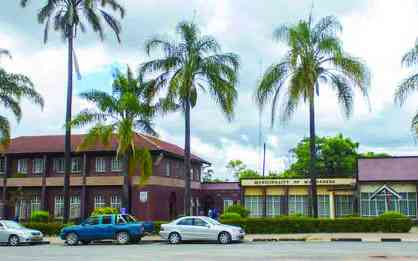
BY NKOSANA DLAMINI
GOVERNMENT says it is working on installing a new radar to improve the surveillance of civilian airspace, amid fresh revelations of a crisis in the air traffic control system.
This publication, working in collaboration with Information for Development Trust (IDT) and ZimStar, a new online publication, recently revealed that private aircraft were sneaking in and out of Zimbabwean airports without detection due to poor surveillance.
The IDT is a non-profit organisation helping to promote the capacity of local and southern African journalists to investigate corruption and bad governance.
An association of the country’s air traffic controllers (ATCs) in May told the Civil Aviation Authority of Zimbabwe (Caaz) board of directors — as exposed in our story — that they had operated without the aid of a working radar system since 2010.
Yes, but no
Transport ministry permanent secretary Theodius Chinyanga, insisted in an interview, though, that the aviation system always had surveillance equipment in place, but was quick to admit that it was antiquated as it was installed a long time ago and, therefore, needed to be replaced.
He also refuted the ATCs’ claim of sneaking aircraft.
- Chamisa under fire over US$120K donation
- Mavhunga puts DeMbare into Chibuku quarterfinals
- Pension funds bet on Cabora Bassa oilfields
- Councils defy govt fire tender directive
Keep Reading
“Any aircraft that is of a civilian nature files its flight path papers before departing, so there is no chance of sneaking in and out,” Chinyanga told The Standard.
He said the current refurbishments at Robert Gabriel Mugabe (RGM) International Airport included the instalment of a new surveillance system.
“Caaz have a radar, but it is old technology. The new installation would be based on current generation of radars.
“The current upgrades on infrastructure should entail all facets of surveillance as well,” added the ministry’s top bureaucrat.
Investigations showed that there was no exclusive tender for the radar — which must cater for all civilian aviation — and it could not be established if the surveillance infrastructure had been bandied up with other installations currently being implemented by China Harbour Equipment Company (CHEC).
It could also not be immediately established if, indeed, a new radar was being installed.
CHEC is an international Chinese engineering company with a chequered history of blacklists, non-delivery of jobs and allegations of bribery in Africa, the Caribbean and other parts of the world.
CHEC bagged the airport upgrade job as a sole bidder through a restricted tender that excluded Western bidders.
It was limited only to China and Russia for “security reasons” after the imposition of sanctions on Zimbabwe by the United States and the European Union in 2002.
The sneaking aircraft were found out to be private planes flying at low altitudes.
The army’s baby
Chinyanga insisted low-flying aircraft were the responsibility of the Defence ministry.
“There are flights of a military nature which can fly in very low altitudes.
“Those are the responsibility of the Ministry of Defence,” he told The Standard.
This tallied with the position of the ATCs, who told the Caaz board in May that the army should look into the issue of the sneaking planes and improve low-altitude aviation security since the aviation authority did not have the capacity.
Efforts to hear from the army and Defence ministry drew blanks.
Defence minister Oppah Muchinguri-Kashiri claimed she was in a meeting when contacted, and ignored several other calls and WhatsApp messages.
She, however, admitted to the possibility of aircraft arriving and leaving undetected last December in an interview with the government-controlled media.
“There are too many airstrips and we know that there are some small aircrafts which fly very low and are difficult to identify.
“This is due to the old radar system that urgently needs replacement,” she said then.
Muchinguri-Kashiri also alleged that the aircraft were being used to smuggle minerals out of the country.
“We are working with Caaz to close the gaps used by these small aircrafts to smuggle minerals, especially gold,” added the minister, who also threatened to close down some of the smaller airports.
The ATCs have also claimed that these smaller ports at times went unmanned by personnel from their department or were undermanned, in contravention of international aviation regulations.
Zimbabwe Defence Forces public relations officer, Colonel Teddy Ndlovu, invited The Standard over for a physical interview and took down media questions.
He later asked for the questions to be sent through email, but never responded despite voice call reminders.
But Levi Mayihlome, the chairperson of the parliamentary portfolio committee on Defence and Home Affairs, who is also a retired brigadier, acknowledged that the army faced challenges with its surveillance system too.
“The Ministry of Defence does have challenges with outdated or old equipment, but I can assure you from our interactions with them that they are doing their best to protect the country’s airspace borders,” Mayihlome said.
“As Parliament, we continue to lobby authorities in the ministry of Finance and apprise society in general that security forces need to be given modern tools of the trade which, by the way, is not cheap.
“We are saying if security is not funded properly, society will get the security worth what they have funded (sic).”
He said his committee was scheduling a tour of the RGM International Airport this month “to find out for ourselves the state of affairs”.
Acute crisis
As government and Caaz grapple with the porous ports, new information shows that ATCs are facing an acute crisis.
A leaked document accuses Caaz directors of bad management of air traffic control.
“Management is failing in its role to provide ATCs with tools of the trade, both basic and major and this is in serious violation of the law which stipulates that all forms/types of tools of trade be in place,” reads the document.
The alleged poor management has impacted negatively on the state of the airports.
The Victoria Falls Airport was refurbished five years ago but, due to reported negligence of aviation communication, “equipment is down to 40% working capacity” and stop bars which regulate runways are now only 30% functional.
The automatic weather observation system is no longer functioning, forcing the ATCs to rely on their Zambian counterparts for weather updates.
Operating conditions for the ATCs have degenerated, the document alleges.
While it is mandatory for them to undergo periodic medical examinations, the practice has been stopped because the aviation authority is failing to book them for medicals at a local medical centre in Borrowdale, Harare, due to “misplaced priorities”.
There are no refresher courses for the ATCs mainly because there are no instructors to manage the flight simulator, with the document also revealing that for ATCs to have their licences renewed, they should undertake refresher courses.
The failure to do that has resulted in 50 ATC licences expiring at the same time by May this year.
Bungled
Top management has reportedly bungled installations and upgrades because of its failure to consult the ATCs.
In the case of the Victoria Falls refurbishments, management unilaterally hired consultants whose work resulted in an unplanned glare disturbing the sight of the controllers.
This reportedly forced Caaz to buy special spectacles for the ATCs at a cost of US$700 each.
The ATCs have also been forced to operate while standing instead of sitting, thereby quickening their exhaustion.
At RGM International Airport, “the Chinese contractor has finished constructing the control tower and put a roof (sic), but ATCs cannot see the aircraft,which park at the international bay.
“The problem is made worse by the colour of the paint which has been used for the building which is reflecting back on the tower, making it difficult to see aircraft as it comes,” notes the leaked document.
At RGM International Airport, the new terminal building is blocking the ATCs’ view in the control tower for International Bay 2, “resulting in them failing to separate aircraft in that area” and “the risk of collision of aircraft … is very high”.
The runway lights fail frequently, reveals the document, and, at one time, a named plane scheduled to land at the Joshua Mqabuko Nkomo International Airport in Bulawayo had to fly back to South Africa and rebook hotels for affected passengers.
By May this year, a senior ATC was earning around ZW$10 000, translating to around US$120.
This contrasted sharply with the US$2 000 earned by an ATC in Zambia and US$6 000 in Ghana, according to the document.
The aviation authority has repeatedly ducked questions in this serialised investigation.










